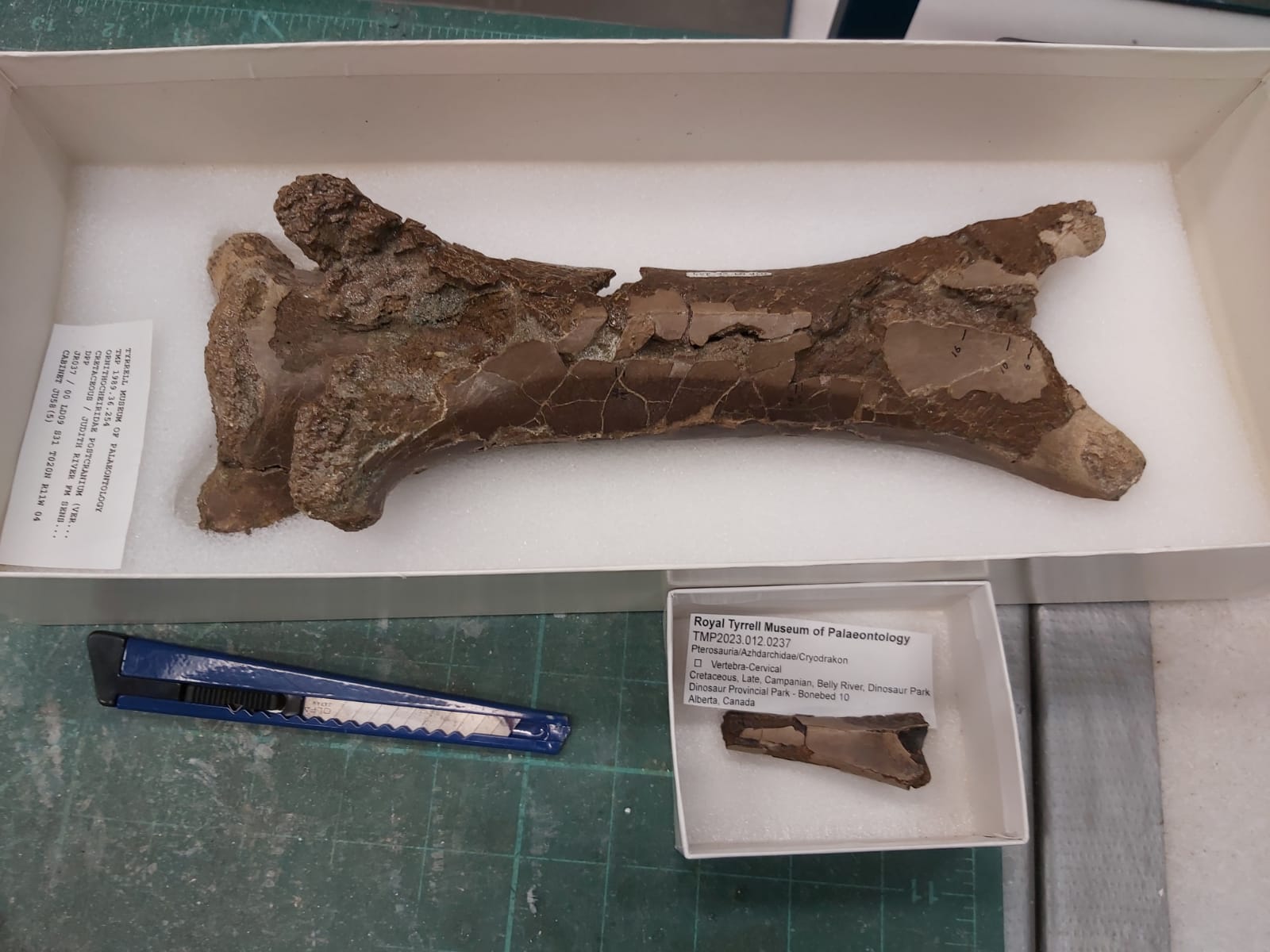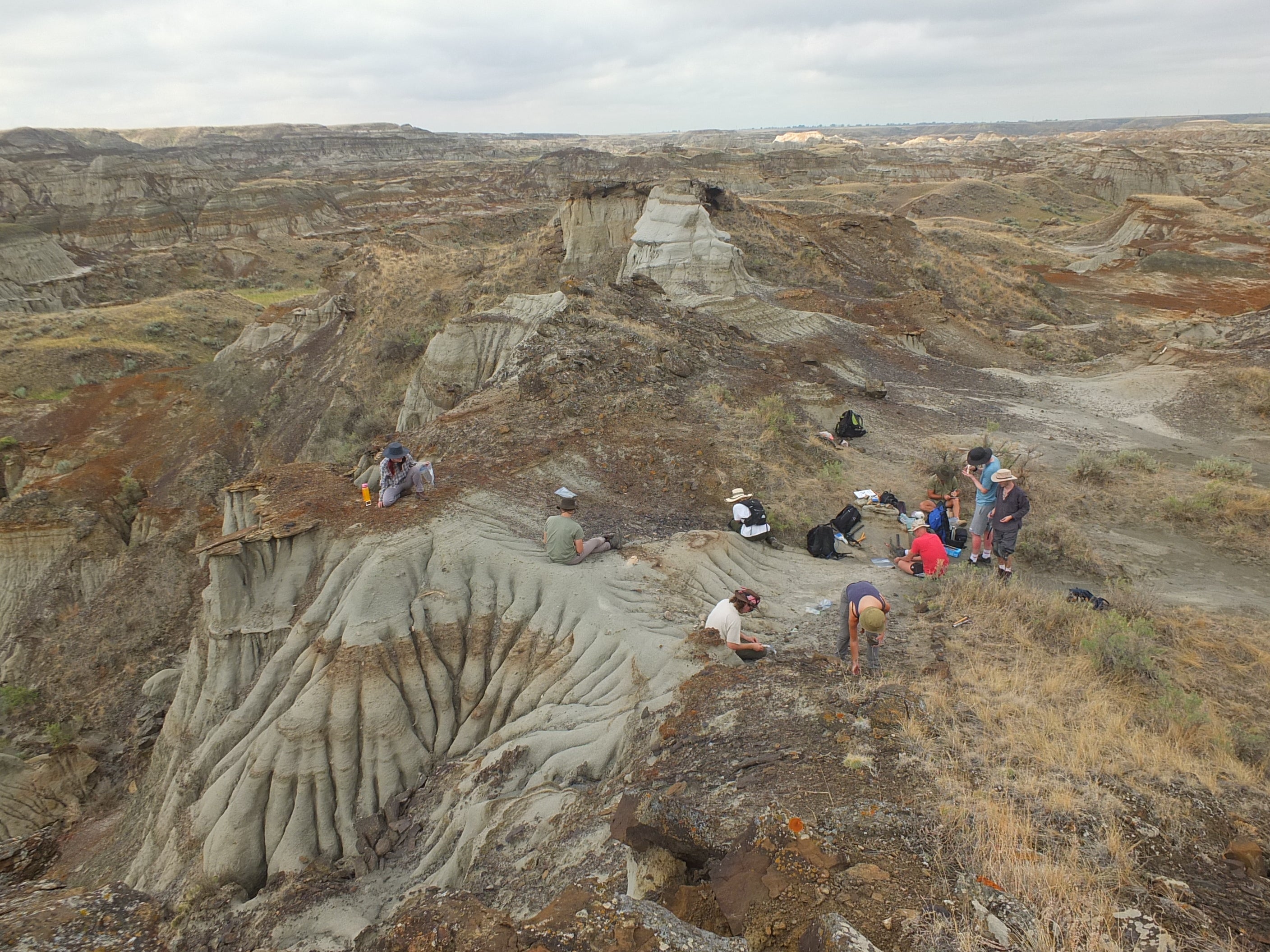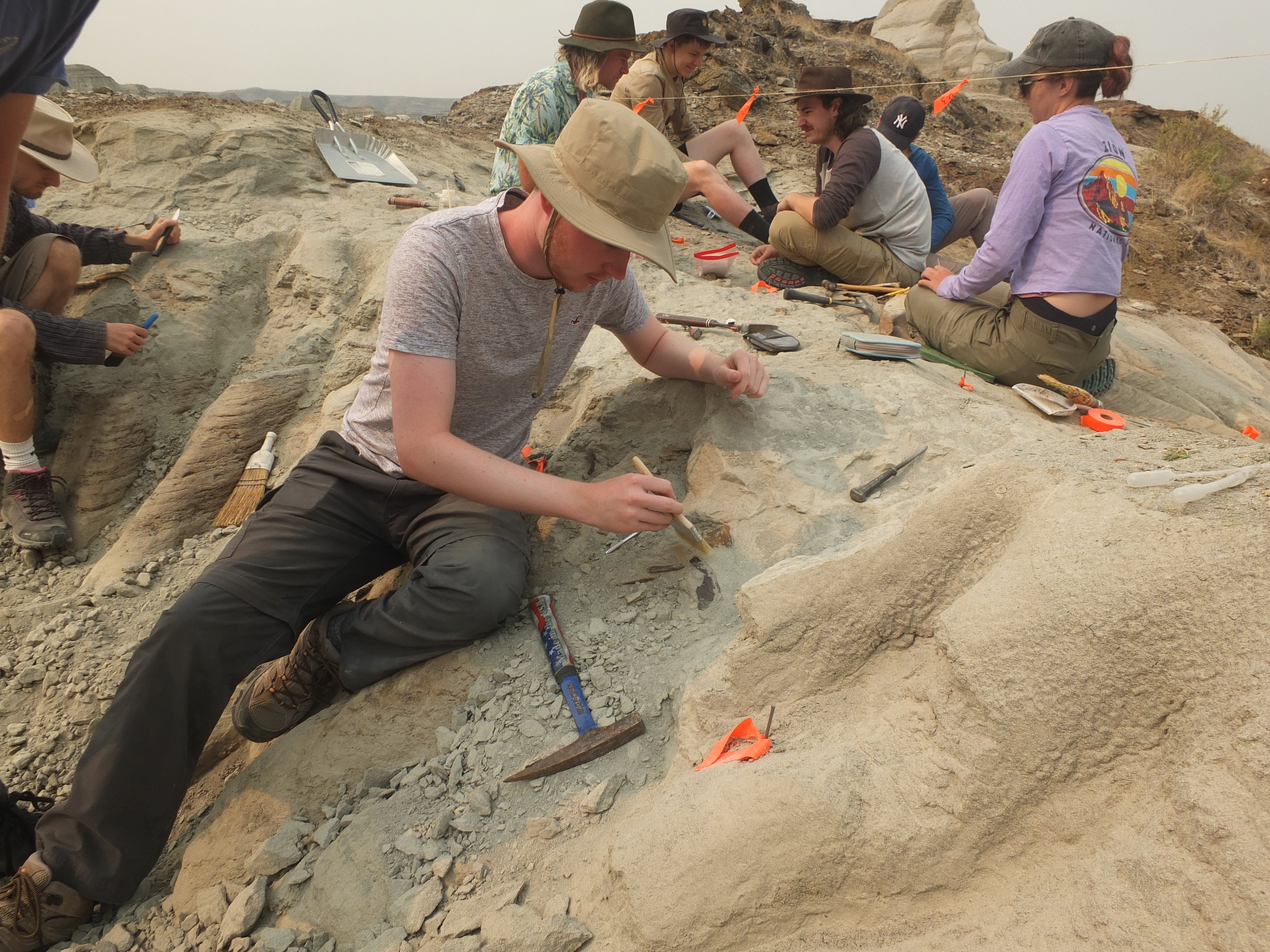Rare fossil of flying dinosaur reveals 76-million-year-old crocodile-like bite
Scientists said the young pterosaur would have had a wingspan of more than 6 feet
A crocodile-like creature bit the neck of a flying dinosaur some 76 million years ago – and scientists have proof.
Archaeologists found the fossilized neck bone of the young pterosaur in Canada’s Dinosaur Provincial Park.
“Bite traces help to document species interactions from this period,” Dr Brian Pickles, from England’s University of Reading, said in a statement.

“We can’t say if the pterosaur was alive or dead when it was bitten but the specimen shows that crocodilians occasionally preyed on, or scavenged, juvenile pterosaurs in prehistoric Alberta over 70 million years ago.”
Pickles is a co-author of a paper announcing the finding that was published Wednesday in the Journal of Palaeontology.
The discovery was made during an international field course led by Pickles in July 2023. The Alberta state park has produced some of the most important dinosaur fossil discoveries ever made, including 35 species dating back some 75 million years.
The vertebra has a circular, four-millimeter-wide puncture mark from a crocodilian tooth.
Researchers say the finding provides insight into the dynamics between predators and their prey in the region during the Cretaceous Period.

They took micro-CT scans, which are often used to diagnose disease or injury, and comparisons with other pterosaur bones to confirm the puncture was the result of a bite and not just damage during its fossilization.
The fossil belongs to a young Azhdarchid pterosaur, also known as Cryodrakon boreas, with an estimated wingspan of 6.5 feet, according to the University of Reading.
Adults of this species would have been as tall as a giraffe, boasting a wingspan of up to 32 feet.

The paper also says this bone is the first evidence in North America of ancient crocodilians opportunistically feeding on these giant prehistoric flying reptiles. Other examples of Azhdarchid bones with possible crocodilian bites have previously been found in Romania.
“Pterosaur bones are very delicate – so finding fossils where another animal has clearly taken a bite is exceptionally uncommon. This specimen being a juvenile makes it even more rare,” the paper’s lead author Dr. Caleb Brown, of the Royal Tyrrell Museum of Palaeontology, said.
Join our commenting forum
Join thought-provoking conversations, follow other Independent readers and see their replies
Comments